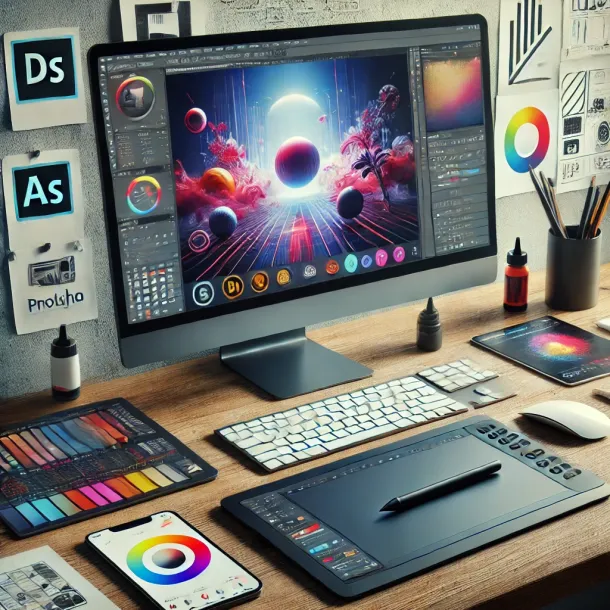How to Make Crafts with Needles and Threads: Basic Embroidery Techniques
How to Make Crafts with Needles and Threads: Basic Embroidery Techniques
Embroidery is an age-old art form that has adorned clothing, home decor, and even art canvases for centuries. The process of creating intricate designs with just a needle and thread is not only a therapeutic hobby but also a way to express creativity and individuality. Whether you’re looking to personalize a piece of clothing or create a handmade gift, learning the basic techniques of embroidery is a rewarding endeavor.
In this article, we will guide you through the fundamental techniques of embroidery, provide tips on choosing the right materials, and inspire you to start your first project. By the end of this guide, you’ll have the confidence to embark on your own embroidery journey and create beautiful, handcrafted pieces.
The History of Embroidery
Embroidery has a rich history that dates back thousands of years. The earliest examples of embroidery can be traced to ancient China, where intricate designs were stitched onto clothing and accessories. Over time, the art of embroidery spread to different cultures, each developing its own unique style and techniques.
In medieval Europe, embroidery was a symbol of wealth and status, with elaborate designs adorning the garments of royalty and nobility. The craft was often passed down through generations, with skills being taught from mother to daughter. Today, embroidery remains a popular form of self-expression and creativity, with modern techniques blending traditional methods with contemporary designs.
Choosing the Right Materials
Before you begin your embroidery journey, it’s essential to gather the right materials. The quality of your supplies can significantly impact the outcome of your project, so investing in good materials is a wise decision.
Fabric
The choice of fabric is crucial in embroidery. Beginners often start with cotton or linen, as these fabrics are easy to work with and provide a smooth surface for stitching. For more advanced projects, consider experimenting with silk, wool, or even canvas.
Needles
Embroidery needles come in various sizes and types, each suited for different techniques and fabrics. A needle with a sharp point and a large eye is ideal for most embroidery projects. The size of the needle should correspond to the thickness of the thread and the fabric’s weave.
Threads
Embroidery threads are available in a wide range of colors and materials, including cotton, silk, and metallic threads. The most commonly used thread is six-strand cotton floss, which can be separated into finer strands for more detailed work. When choosing thread colors, consider the design and the effect you want to achieve.
Hoops
An embroidery hoop is used to keep the fabric taut while you work. Hoops are available in various sizes and materials, including wood, plastic, and metal. The size of the hoop should match the size of your design, ensuring that the fabric remains evenly stretched.
Scissors
A small pair of sharp embroidery scissors is essential for cutting threads precisely. Look for scissors with pointed tips to easily trim threads close to the fabric.
Basic Embroidery Stitches
Embroidery is built on a foundation of basic stitches. Mastering these stitches will allow you to create a wide variety of designs, from simple monograms to intricate floral patterns. Here are some of the most essential stitches to get you started:
Running Stitch
The running stitch is one of the simplest embroidery stitches, making it ideal for beginners. It involves passing the needle in and out of the fabric at regular intervals, creating a dashed line. This stitch is often used for outlining shapes and creating borders.
Backstitch
The backstitch is a versatile stitch used for outlining and adding fine details to your embroidery. To create a backstitch, bring the needle up through the fabric and then back down a short distance ahead. Bring the needle back up again, this time behind the previous stitch, and repeat.
Satin Stitch
The satin stitch is used to fill in shapes with a smooth, solid block of color. To create a satin stitch, bring the needle up at one side of the shape and down at the opposite side, working back and forth until the entire area is filled. The key to a neat satin stitch is to keep the stitches close together and of even length.
French Knot
The French knot is a decorative stitch used to create small, raised dots. To make a French knot, bring the needle up through the fabric, wrap the thread around the needle two or three times, and then insert the needle back into the fabric close to where it came up. Pull the thread tight to form a small knot on the surface of the fabric.
Chain Stitch
The chain stitch is a decorative stitch that creates a linked chain effect. To create a chain stitch, bring the needle up through the fabric and make a small loop. Insert the needle back into the fabric close to the starting point, then bring it up again inside the loop to secure it. Repeat this process to create a continuous chain.
Lazy Daisy Stitch
The lazy daisy stitch is a variation of the chain stitch used to create small, petal-like shapes. Begin by making a loop as you would for a chain stitch, but instead of continuing the chain, secure the loop with a small straight stitch at the base. This stitch is perfect for creating flowers and other delicate designs.
Creating Your First Embroidery Project
Now that you’re familiar with the basic stitches, it’s time to put your skills to the test with your first embroidery project. Follow these steps to create a simple yet beautiful embroidered design.
Step 1: Choose a Design
Start by choosing a simple design that incorporates the basic stitches you’ve learned. A floral motif, a monogram, or a geometric pattern are all excellent choices for beginners. You can find design inspiration online, in embroidery books, or by sketching your own ideas.
Step 2: Transfer the Design to Fabric
Once you’ve chosen your design, transfer it onto your fabric. There are several methods for transferring designs, including using transfer paper, tracing with a lightbox, or drawing directly onto the fabric with a water-soluble pen. Ensure the design is centered and positioned correctly within your embroidery hoop.
Step 3: Prepare Your Threads
Cut a length of embroidery floss and separate the strands if necessary. Thread your needle and tie a small knot at the end of the thread. If you’re using multiple colors, prepare each color separately and keep them organized.
Step 4: Start Stitching
Begin stitching your design, starting with the outlines using a backstitch or running stitch. Once the outlines are complete, fill in the shapes with satin stitches, and add any decorative details with French knots or lazy daisy stitches. Take your time and focus on making even, consistent stitches.
Step 5: Finishing Touches
Once you’ve completed your embroidery, carefully remove the fabric from the hoop and trim any loose threads. If necessary, gently wash the fabric to remove any tracing marks and press it with an iron to smooth out any wrinkles. Your finished piece can be framed, sewn onto clothing, or used as a decorative element in other craft projects.
Tips for Success in Embroidery
Embroidery is a skill that improves with practice, so don’t be discouraged if your first few projects aren’t perfect. Here are some tips to help you succeed in your embroidery journey:
Start Simple
Begin with small, simple designs that incorporate basic stitches. As you gain confidence, you can move on to more complex projects.
Practice Patience
Embroidery is a slow and meticulous process. Take your time with each stitch and enjoy the meditative aspect of the craft.
Experiment with Colors
Don’t be afraid to experiment with different thread colors and combinations. The beauty of embroidery lies in its versatility and ability to create unique, personalized designs.
Keep Your Tension Consistent
Maintaining consistent thread tension is key to achieving neat, professional-looking stitches. Avoid pulling the thread too tightly, as this can cause the fabric to pucker.
Learn from Mistakes
Mistakes are a natural part of the learning process. If you make a mistake, don’t hesitate to undo it and try again. Each project is an opportunity to improve your skills.
Join a Community
Consider joining an embroidery group or online community where you can share your work, ask for advice, and find inspiration. Being part of a community can keep you motivated and help you learn from others.
Advanced Techniques to Explore
Once you’ve mastered the basics, you may want to explore more advanced embroidery techniques. These techniques can add depth, texture, and complexity to your projects:
Appliqué
Appliqué involves sewing pieces of fabric onto a larger piece to create a design. This technique is often combined with embroidery to add texture and dimension.
Ribbon Embroidery
Ribbon embroidery uses silk or satin ribbons instead of thread to create three-dimensional floral designs. The ribbons add a luxurious texture and can be used to create realistic-looking flowers.
Goldwork
Goldwork is a traditional embroidery technique that uses metallic threads to create intricate, shimmering designs. This technique is often used in ceremonial and religious garments.
Stumpwork
Stumpwork is a form of raised embroidery that creates three-dimensional elements on the fabric. This technique involves padding certain areas of the design to make them stand out from the background.
Freehand Embroidery
Freehand embroidery allows you to create designs without following a pre-drawn pattern. This technique encourages creativity and spontaneity, as you can stitch directly onto the fabric, letting the design evolve as you work.
Conclusion: Embark on Your Embroidery Journey
Embroidery is a timeless craft that offers endless possibilities for creativity and self-expression. Whether you’re a complete beginner or looking to refine your skills, the techniques and tips outlined in this guide will help you create beautiful, handcrafted pieces that you can be proud of. Remember, the key to success in embroidery is practice, patience, and a willingness to experiment.
As you continue to explore the world of embroidery, don’t hesitate to try new techniques and push the boundaries of your creativity. Happy stitching!


